13/05: The Isle of Lewis
Category: General
Posted by: The Agnew Family
The Isle of Lewis is the top 2/3rds of Harris and Lewis. Today we are touring around that portion of the island. Lewis is a lot flatter than Harris, not to say it's flat but the hills are definitely smaller and the roads are straighter.
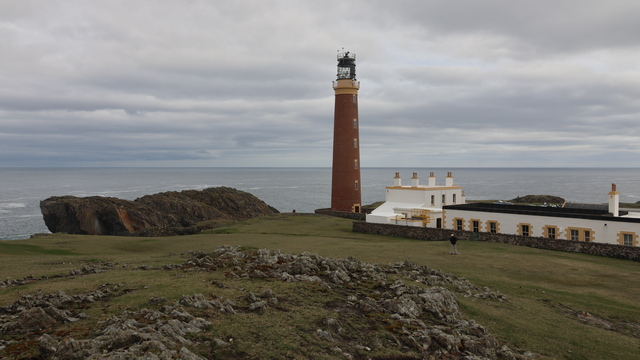
The Butt of Lewis Lighthouse. The lighthouse was engineered by David Stevenson in 1862, a uncle of Robert Louis Stevenson.
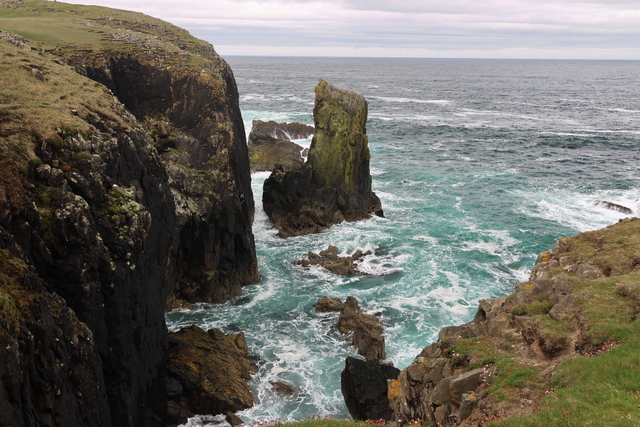
Looking over the cliff at the lighthouse.
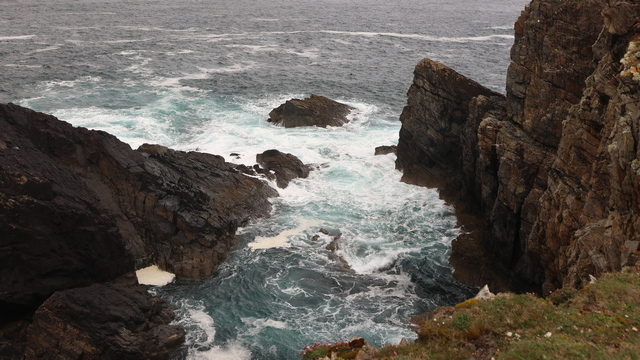
More cliffs and water. The main rock found here is Lewisian Gneiss, formed 3000 million years ago and some of the oldest rocks in Europe.
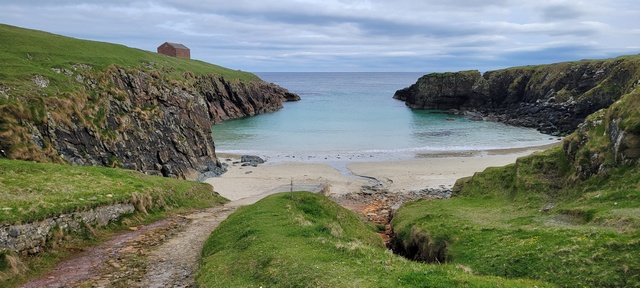
Not far from the lighthouse was this cute little sandy beach.
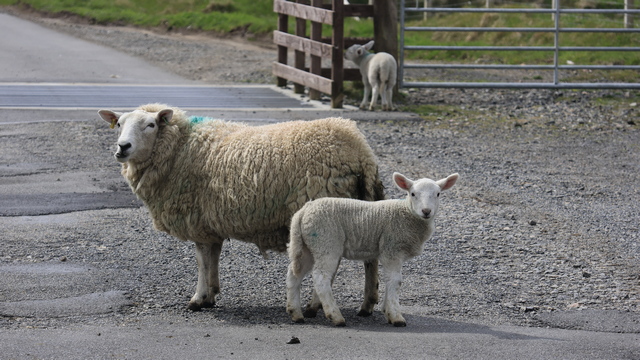
When you're driving around Harris and Lewis you have to always be watching for sheep on the road. When you're walking around you're always trying to avoid sheep and cow droppings. To keep the animals in a particular area cattle grates cross the road. A number of sheep were on the road in front of us --- mama sheep was staring us down. The baby raced up to mama and started nursing, then started staring us down as well. Luckily, they will move if you drive slowly towards them.
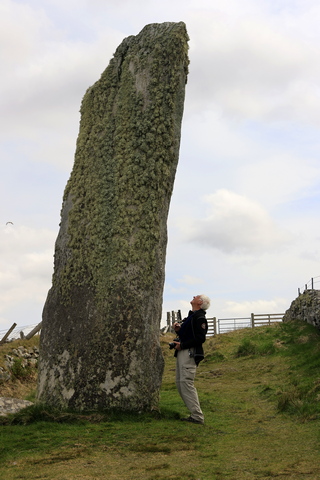
Clach an Truiseil is the tallest standing stone in Scotland at over 19 feet high (5.8m), with another 6 feet (2m) underground. Local tradition says that the stone marks the site of a clan battle between the Macaulays and the Morrisons or, alternatively, the grave of a Norse warrior killed in battle.
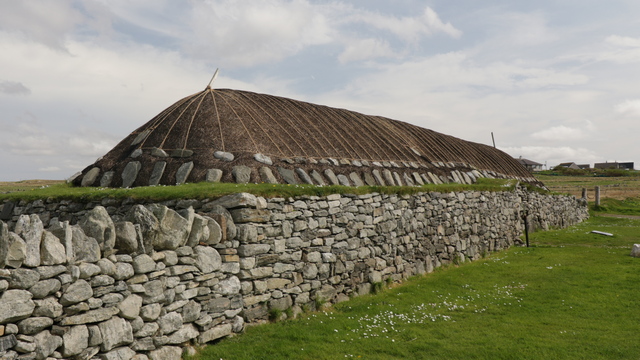
The blackhouse is a traditional type of house which use to be common in the Scottish highlands. This is a reconstruction of a blackhouse.
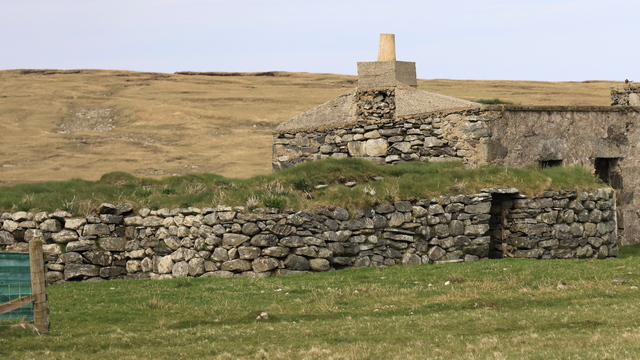
Ignoring the larger building behind it, this is what blackhouses look like today.
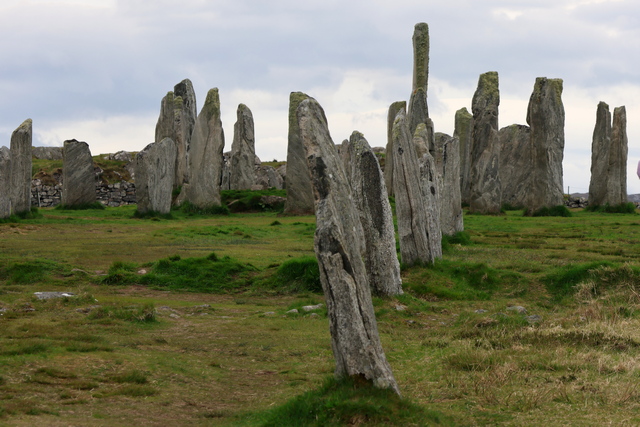
The Callanish Stones are an arrangement of standing stones placed in a cruciform (cross) pattern with a central stone circle. The stone circle was set up between 2900 and 2600 BC, but they are not sure when the other stones were placed. The Callanish Stones predate England's Stonehenge.
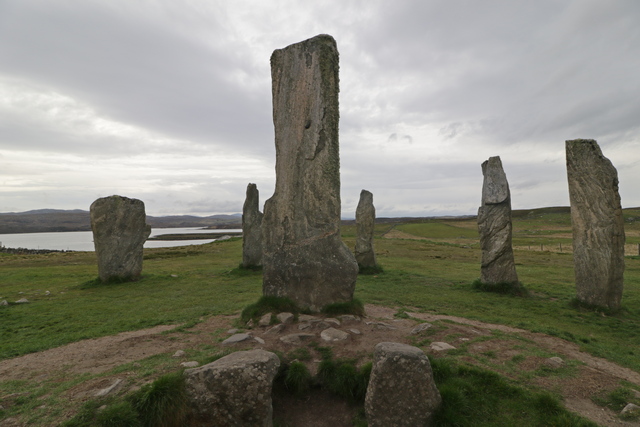
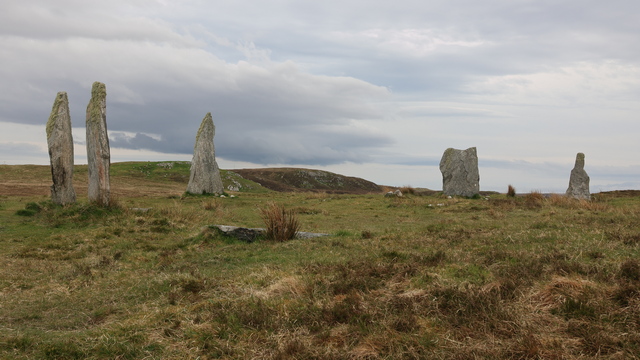
On Lewis there are many standing stones, stone circles, etc. This site is referred to as Callanish Stones II and it's not far from the Callanish Stones (Callanish I)
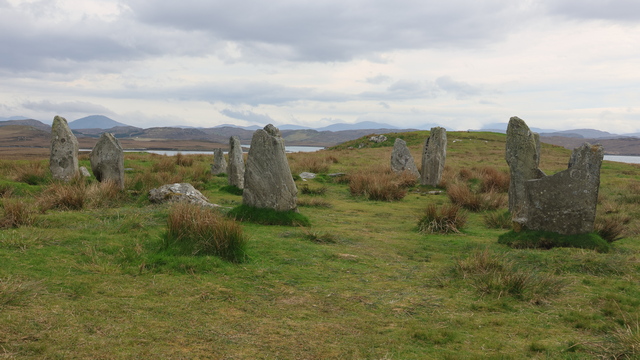
This is Callanish III, one field over from Callanish II.
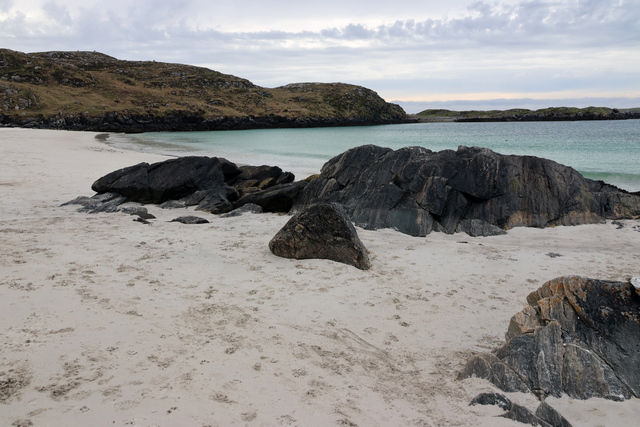
Bosta Beach at the end of Great Bernera Island. A bridge links Great Bernera Island to Lewis. Interesting fact, after a huge storm in the 1990's a lot of the sand from the beach was washed out uncovering some Iron Age Houses. They were studied then recovered with sand as the sand was naturally coming back to the beach.
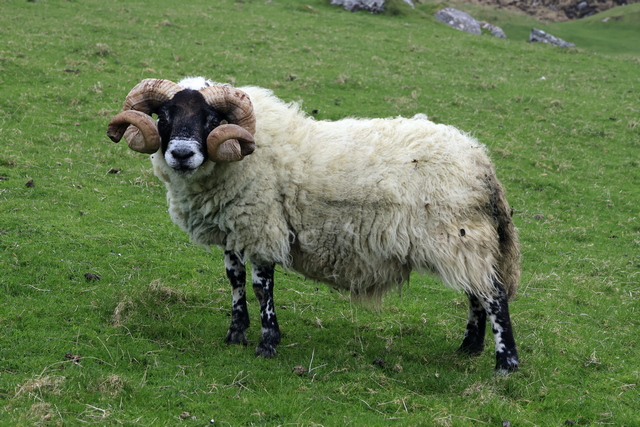
Now that's a nice set of horns.
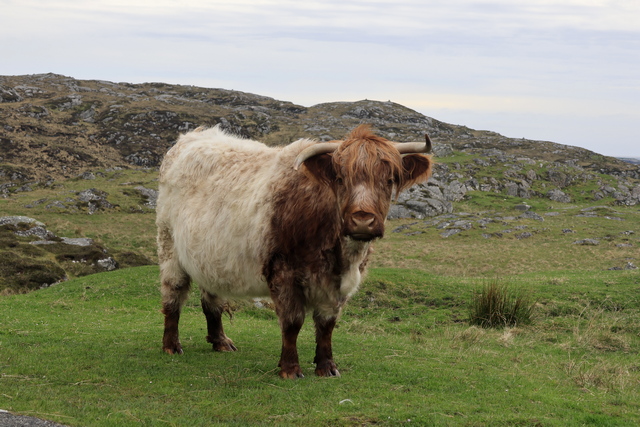
A hairy coo or by it's proper name a highland cow. This one needs a little work on one of his horns.

The Butt of Lewis Lighthouse. The lighthouse was engineered by David Stevenson in 1862, a uncle of Robert Louis Stevenson.

Looking over the cliff at the lighthouse.

More cliffs and water. The main rock found here is Lewisian Gneiss, formed 3000 million years ago and some of the oldest rocks in Europe.

Not far from the lighthouse was this cute little sandy beach.

When you're driving around Harris and Lewis you have to always be watching for sheep on the road. When you're walking around you're always trying to avoid sheep and cow droppings. To keep the animals in a particular area cattle grates cross the road. A number of sheep were on the road in front of us --- mama sheep was staring us down. The baby raced up to mama and started nursing, then started staring us down as well. Luckily, they will move if you drive slowly towards them.

Clach an Truiseil is the tallest standing stone in Scotland at over 19 feet high (5.8m), with another 6 feet (2m) underground. Local tradition says that the stone marks the site of a clan battle between the Macaulays and the Morrisons or, alternatively, the grave of a Norse warrior killed in battle.

The blackhouse is a traditional type of house which use to be common in the Scottish highlands. This is a reconstruction of a blackhouse.

Ignoring the larger building behind it, this is what blackhouses look like today.

The Callanish Stones are an arrangement of standing stones placed in a cruciform (cross) pattern with a central stone circle. The stone circle was set up between 2900 and 2600 BC, but they are not sure when the other stones were placed. The Callanish Stones predate England's Stonehenge.


On Lewis there are many standing stones, stone circles, etc. This site is referred to as Callanish Stones II and it's not far from the Callanish Stones (Callanish I)

This is Callanish III, one field over from Callanish II.

Bosta Beach at the end of Great Bernera Island. A bridge links Great Bernera Island to Lewis. Interesting fact, after a huge storm in the 1990's a lot of the sand from the beach was washed out uncovering some Iron Age Houses. They were studied then recovered with sand as the sand was naturally coming back to the beach.

Now that's a nice set of horns.

A hairy coo or by it's proper name a highland cow. This one needs a little work on one of his horns.